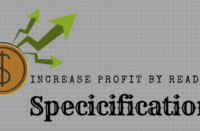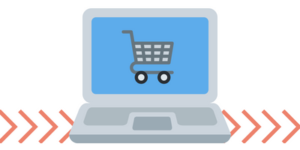When it comes to communicating with your customers, electronic newsletters are a powerful tool to highlight your expertise and experience. Since we live in a society in which most of us are glued to our phones even when we are out of the office, a well-designed newsletter can be an effective means to quickly continue to strengthen your brand. However, the key to success is ensuring that you have a well-thought-out strategy, defined target audiences and information that truly is beneficial for those receiving the communication.
It starts with strategy
Too often, the action plan for getting an e-newsletter published is simply a goal related to frequency, not related to branding or delivering content. While regular communication is key, start by defining the goal of the communication. No different than other marketing tactics, a successful e-newsletter program begins with a clear strategy.
First, map out your goals. They might include:
- Increasing awareness of your products and services,
- Building trust with potential clients by showing how you work, your company’s expertise and the results you can deliver, and ultimately
- Generating new leads for your business.
Next, plan your content. As you plan, the most important thing to remember is your content isn’t about you — it’s about your customer. In other words, don’t tell your customers only what you want to say. Tell them what they want — and need — to hear. Your message must clearly and quickly relate to your customers’ needs, or they’ll click delete.
Brainstorm and ask probing questions that will help you get inside your typical customer’s thought processes. What problems do your customers face and how can you help solve them? Have you recently completed a unique project? Showcase your work in a case study. But even case studies can take a wrong turn if it’s all about you. The case study must pass the “so what?” test, with the customer’s benefits clearly stated at the beginning. Simply regurgitating project facts and stats in paragraph form won’t engage your audience. Examine the project. What about it could help other clients in their business? What solutions does the case study exemplify?
Other ideas for your e-newsletter include:
- Has your company undergone any facility revamping such as a refurbished manufacturing plant? Your customers will be glad to know you’re upgrading your facilities and keeping up to date with the newest equipment.
- New products? Changes to current products? An e-newsletter is a great way to get this information out to your customers and let them know about your company’s new product developments.
- Do you offer training programs? Get that information out so your customers can learn more about your services.
- Will you be attending any trade shows? Symposiums? Provide the date and place, and booth numbers if appropriate, so your customers can visit you at these functions.
As you plan your content, keep in mind that a simple structure is best. Your customers are bombarded by messages every day, so the most effective e-newsletters are short and to the point. One brief, useful article and a few shorter blurbs and news items are typical for most e-newsletters. Include videos whenever possible, as well as good images. They are a must for engaging your reader.
Build your contact list
Cost-efficient when compared to direct mail and other efforts, an e-newsletter allows you to stay in front of your customers on a regular basis. However, it’s essential that you have a solid list so you are reaching the right targets.
In addition to meaningful content, your e-newsletter database is an essential part of a successful program. Web applications and email marketing software have simplified this process. With a point and click, your message is loaded and sent to your contact list and many will enable you to store these contacts in a searchable database. Once you’ve selected your distribution platform, beginning and maintaining your e-newsletter program is simple.
So how do you build the right contact list? Consider beginning with your existing business contacts to form your list and once the list is in place, think about how to grow it. In short, make the most of every opportunity.
Here are some ideas:
Speaking engagements. Will you be speaking at a local association’s meeting? Be sure to have a collection spot where attendees can sign up to receive news and tips from you. By leaving a business card, attendees can opt-in to receive your e-newsletter and perhaps even register to receive a prize or give-away in return.
Trade shows.Likewise, if you exhibit at any shows, set up a collection spot where attendees can be added to your news mailing list and sign up to receive a give-away.
Your website. Add a signup area on your website where visitors can register to receive your e-newsletters. A “pop-up” field could appear only for website visitors who haven’t registered for your e-newsletter.
Social media. Promote your e-newsletter through Facebook, Twitter and other social media efforts. Share the link to your website signup, and when your e-newsletter is up and running, share it via social media, too.
Review the metrics
With a defined strategy and targeted messages to your key audiences, you can build an effective e-newsletter program. But, how do you know if you are successful? Many software platforms such as Constant Contact provide metrics related to readership, click-throughs (when a reader clicks on a link in your e-news), bounce-backs (an email that never arrives in the recipient’s inbox) and more. This information is key to review to ensure you aren’t simply pumping out information, but it is being read.
Further, you may be able to identify trends, such as a statistic that indicates your readership really reads the safety column more than the product information. Using this information, you can refine your future topics and create greater interaction.
No matter what your approach, remember electronic newsletters can be a relatively simple way to stay in touch with your customers. Whether your customers are vastly different or fairly homogeneous, relevant content is the key to building a successful newsletter program — and lasting relationships with your clients.
If you’re interested in brainstorming ideas or evaluating your program, please contact me for a free evaluation.
















